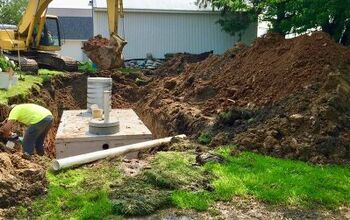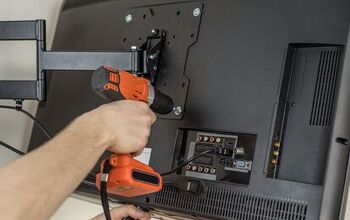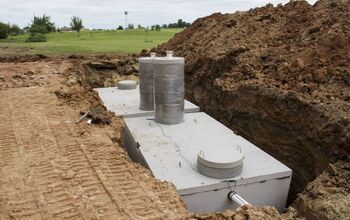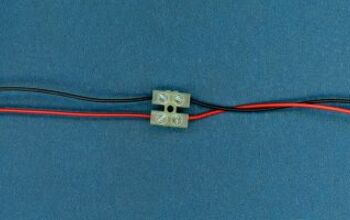Tornado Warning Checklist For Homeowners

Nobody wants to think about what can happen when a tornado strikes near their home. However, this is a real risk for homeowners in the Central United States. That’s why we put together a thorough tornado warning checklist for homeowners.
Invest in a portable charger for your phone and flashlight batteries and gather 3 days’ worth of food and water. Clear the center of the room in your tornado shelter so you and your family can easily stand there to avoid flying debris if a tornado strikes. Bring your pets indoors and move to your shelter when the tornado watch turns into a tornado warning.
There is no such thing as “too safe” when it comes to tornadoes. Follow along as we explore our comprehensive tornado warning checklist for homeowners.
What To Do When A Tornado Watch Is Issued
1. Gather Food And Water
Tornadoes are devastating, and they don’t discriminate. Before a tornado strikes, you must gather essentials like food and water to ensure you’re prepared. Ideally, you should safely store non-perishable food and jugs of water in your home throughout tornado season.
It’s a great idea to buy enough canned foods and water to last you and everyone in your home for 3 days or longer. This is important during any type of natural disaster, as people often get displaced, and emergency services may take a while to reach you. Some people store food and water in their makeshift tornado shelters for convenience.
Easy access is key, as many people understandably panic during the commotion of a tornado siren. Tell everyone in your home where the food and water are to ensure everyone is on the same page.
2. Collect Important Documents
Naturally, you can’t scurry around your house and gather all your documents when a tornado touches down. That’s why it’s best to collect your important documents when a tornado watch is issued. This indicates that a tornado could strike, so it’s important to gather everything you need and prepare to take shelter.
Documents such as your birth certificate, home title, car title, health insurance card, and social security card are important. Granted, you can have these documents reissued, but it is a big hassle. Having your health insurance card on hand is important in case you get injured during a tornado.
Keep in mind that you may not have time to gather important documents or even food and water if a tornado warning is issued. A warning indicates a tornado has been sighted. The last thing you want to do is get caught outside of your shelter when a tornado touches down. Preparing before the National Weather Service issues a tornado warning is the best way to protect yourself.
3. Enable Notifications
Falling behind on weather updates is a risk that’s not worth taking during tornado season. Ideally, you should install local weather apps if you have a smartphone. Enable notifications to ensure you get updates in real-time as they occur.
It’s also a great idea to turn your TV on and watch the local news. That way, you can follow updates as they occur, such as when a tornado watch turns into a tornado warning. Such updates can tell you the timeline, where the tornado is, and the severity of the situation.
However, you may lose your TV connection during the storm if the wind is quite severe. That’s why it’s important to have a secondary information source, like an iPhone or Android.
4. Charge Your Devices
A tornado is the worst time for your phone battery to die. However, some people don’t know that the weather conditions may lead to a tornado. Because of that, they may have their smartphones on 20% battery or less by the time a watch or warning is issued.
Luckily, you can plan and charge your phones and tablets long before tornado weather. This is easy if you keep track of the weather and know when to expect severe weather. You may lose power during the storm, so it’s important to have a full cell phone battery.
It’s worth buying a portable charger to charge your phone even after you lose power. Charge your rechargeable batteries if you have them to power radios and flashlights as needed.
5. Light The Way
Losing power during a tornado is understandably scary, especially if you have no other light sources. That’s why you must keep at least a few flashlights and electric lanterns on hand year-round. They will come in handy even if you lose power outside of tornado season.
Store some flashlights and electric lanterns in spots you can easily access during a commotion. Naturally, you should stash some flashlights in your tornado shelter, whether it be a cellar or basement. However, you must never light candles and use oil lanterns during a tornado watch or warning.
This can create a severe fire hazard that is just as dangerous as the tornado itself. Extinguish any candles or oil lanterns in your home before you make your way to a shelter during a tornado warning. Otherwise, the high winds can spread the flames throughout your house.
6. Pick A Safe Shelter
Ideally, you should choose a safe tornado shelter long before tornado season hits. When picking a tornado shelter, you must look for a room with as little glass as possible. Windowless rooms on the lowest levels of houses are the best candidates for tornado shelters.
Basements are typically the best tornado shelters as they can protect you from debris and structural damage. Keep the center of your basement as clear and clean as possible, as that is the safest place to be during a tornado. The center of the room is safer from debris, especially if you’re far from windows and glass objects.
Some people invest in professionally built tornado shelters, which cost between $2,800 and $13,000 or more. The cost depends on the size, location, materials, and labor rate. However, that is mostly unnecessary if your home has a well-protected basement.
7. Keep Your Pets Indoors
Tornadoes are stressful enough without having to worry about your pets. Tornado sirens can easily scare dogs and cats, causing them to run away and hide. That’s why you must bring them indoors if tornado conditions are in the forecast.
Keep track of your pets and keep them nearby when a tornado watch is issued. Gather them and bring them with you into your tornado shelter. It’s worth putting a few bowls of food and water in your tornado shelter, as you never know how long you must stay down there.
What’s The Difference Between A Tornado Watch And A Warning?
A tornado watch is when a tornado can occur because of weather conditions, and a warning means a tornado has appeared. Naturally, tornado warnings are more alarming than tornado watches. That’s because a tornado warning means there is a tornado in your area.
However, you must take a tornado watch seriously as well. A tornado watch can let you know there is a chance a tornado will strike, which gives you time to prepare. That’s why enabling notifications is so important, as you can watch the timeline in real-time.
It’s always a great idea to prepare an emergency kit and gather supplies before a warning is issued. That way, you won’t have to rush around the house when the tornado siren goes off. Instead, you can calmly move to your shelter and wait for it to pass in safety.
When Is Tornado Season?
Tornado season lasts between March and June, but it can occur year-round. Tornadoes especially ramp up throughout April and May due to the temperature changes. However, peak tornado activity ultimately varies based on where you live.
States like Illinois, Missouri, Oklahoma, Ohio, Wisconsin, and Nebraska are prone to tornadoes. Tornadoes are mostly centralized in the United States, which is why the central U.S.A. is known as Tornado Alley. The mixture of cool and warm air due to sporadic temperature changes is a recipe for tornadoes.
Summing It Up
Gather enough food and water to last you, your family, and your pets for 3 days when a tornado watch is issued. Charge your phone and electronic devices, sign up for weather notifications, and keep the local news on the TV. Gather flashlights and electric lanterns, and shelter in a low-level room when the tornado watch turns into a tornado warning.
Related Guides:

Nick Durante is a professional writer with a primary focus on home improvement. When he is not writing about home improvement or taking on projects around the house, he likes to read and create art. He is always looking towards the newest trends in home improvement.
More by Nick Durante













![10 Best Electric Pressure Washers – [2022 Reviews & Guide]](https://cdn-fastly.upgradedhome.com/media/2023/07/31/9070600/10-best-electric-pressure-washers-2022-reviews-guide.jpg?size=350x220)
![The 10 Best Table Saws - [2022 Reviews & Buyer's Guide]](https://cdn-fastly.upgradedhome.com/media/2023/07/31/9070645/the-10-best-table-saws-2022-reviews-buyer-s-guide.jpg?size=350x220)
![Standard Dining Room Table Dimensions [for 4, 6, 8, 10 and 12 People]](https://cdn-fastly.upgradedhome.com/media/2023/07/31/9074335/standard-dining-room-table-dimensions-for-4-6-8-10-and-12-people.jpg?size=350x220)











